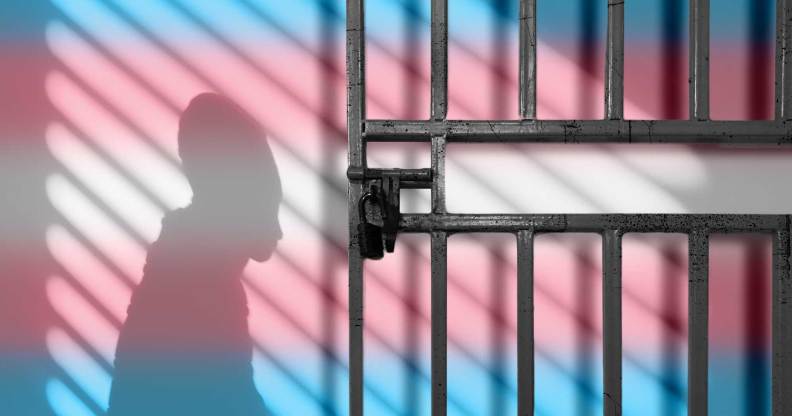Majority of trans inmates in UK are in prisons not matching their gender

Trans women who have committed crimes that hurt women will now be held in male prison facilities in Scotland. (Getty)
Across the UK, including in Scotland, trans prisoners are individually assessed and, in most cases, housed in prisons that don’t relate to their gender identity.
The issue of where trans prisoners are housed has become a topic of debate following the case of Isla Bryson, a trans woman convicted by a court in Scotland of raping two women prior to her transition.
It was reported that Bryson was held at the women’s prison Cornton Vale. Two days after she was found guilty, it was confirmed that she was being moved to a men’s prison.
First minister Nicola Sturgeon said: “I don’t see how it’s possible to have a rapist within a female prison, even the understandable public and parliamentary concern. …
“And I hope that provides assurance to the public presiding officer, not least to the victims, in this particular case.”
Scotland’s trans prisoner policy
The Scottish Trans project has reported that Bryson was held in segregation at Cornton Vale while a risk assessment was carried out. As it explained, this is how the Scottish Prison Service’s policy works.
“The risk assessment decided, not surprisingly, that she [Bryson] should not be held in the women’s estate. This is what we would expect for a person convicted of rape,” Scottish Trans said on Twitter.
The service decides where to house trans prisoners on a case-by-case basis.
Scottish Trans added: “It is right that this should be decided on an individualised risk assessment basis.
“For example, a trans woman transitioned for 20 years, who is in prison for a non-violent offence like financial fraud, might pose no risk to other women in custody, but be at significant risk herself if accommodated on the male estate.”
It added that the risk assessments do not depend on whether or not the inmate has a Gender Recognition Certificate (GRC). This means Scotland’s vetoed Gender Recognition Reform Bill, which would make it easier to obtain a GRC, would not affect the prison service’s policy in Scotland.
On 26 January, the UK government announced it will no longer place trans women who have “male genitalia” in women’s prisons in England and Wales.
Under the reforms, the Ministry of Justice has said transgender women with “male genitalia” – or those who have been convicted of a sexual offence – should no longer be held in general women’s prisons.
The ministry said this will “create a strong presumption” but also allow for exemptions to be considered by ministers on a “case-by-case basis”.
However, the department noted that only the “most truly exceptional cases” will be considered.
How many trans men and women are there in prison?
According to the BBC, as of September 2022 there were four trans men in Scottish prisons, one of whom was held in a men’s prison. Of the 11 trans women, five were in women’s prisons.
Data published in November 2022 by the Ministry of Justice shows there are 230 transgender prisoners out of a prison population of 78,058 in England and Wales.
Of these 230 prisoners, 168 identified as trans women, 42 as trans men, 13 as non-binary and seven identified in a different way or did not provide a response.
“Most transgender prisoners were in the men’s estates,” the report read.
“181 transgender prisoners were in male estates and 49 were in female estates. There were six transgender women in female establishments.”
While a full breakdown of which trans prisoners were held in the prison corresponding to their gender identity was not given, it is clear that of 168 inmates identifying as trans women, only six were housed in women’s prisons.
The report added that the figures of trans inmates are “likely to underestimate the true number”. The numbers do not include trans prisoners with a Gender Recognition Certificate, of which there are 11.

